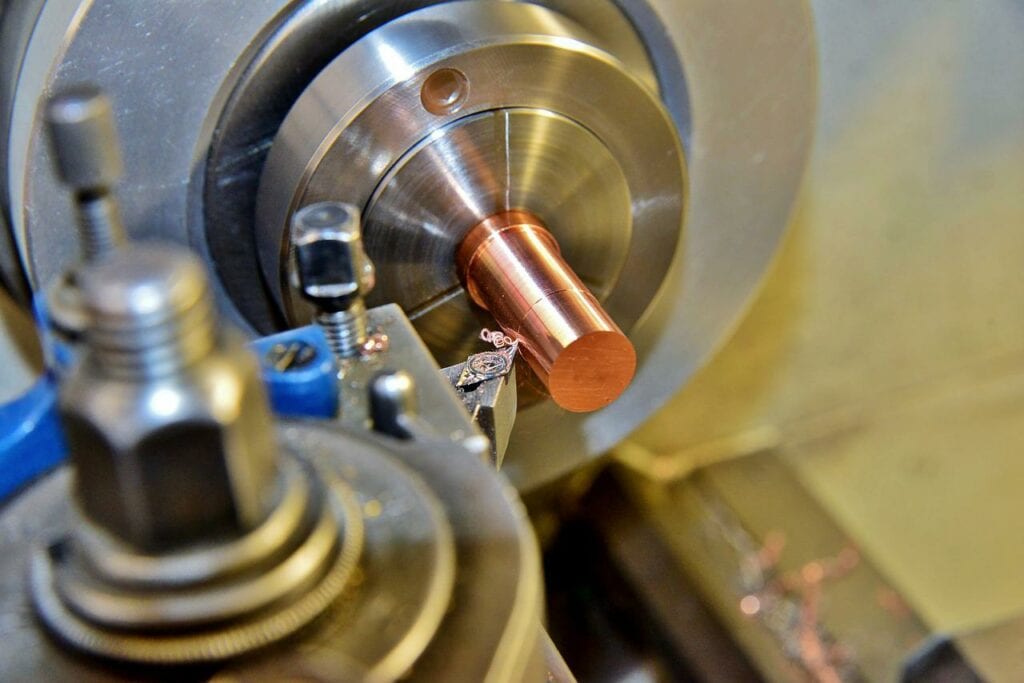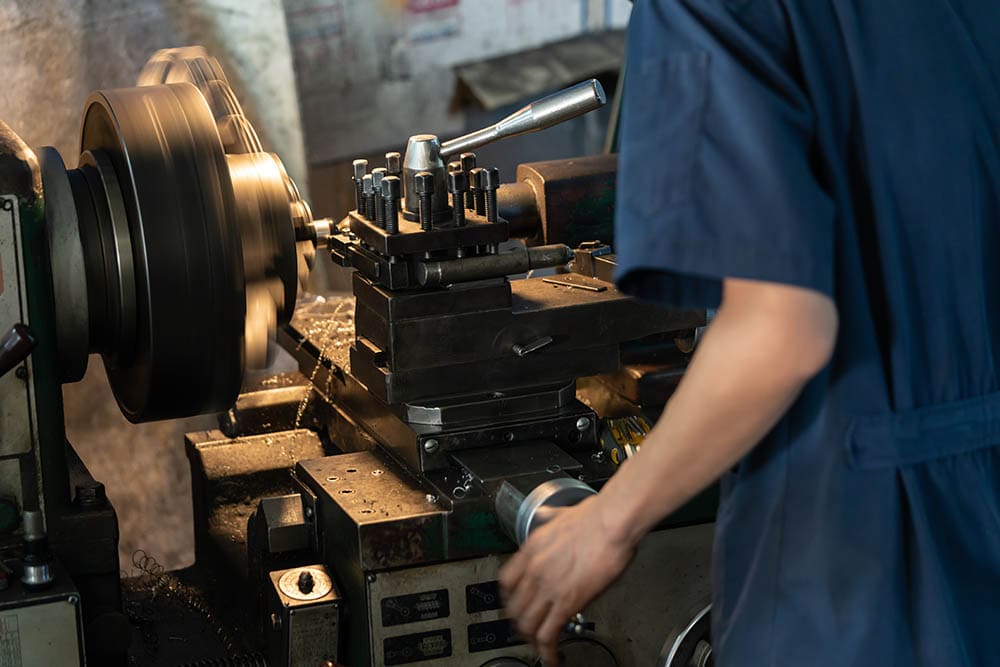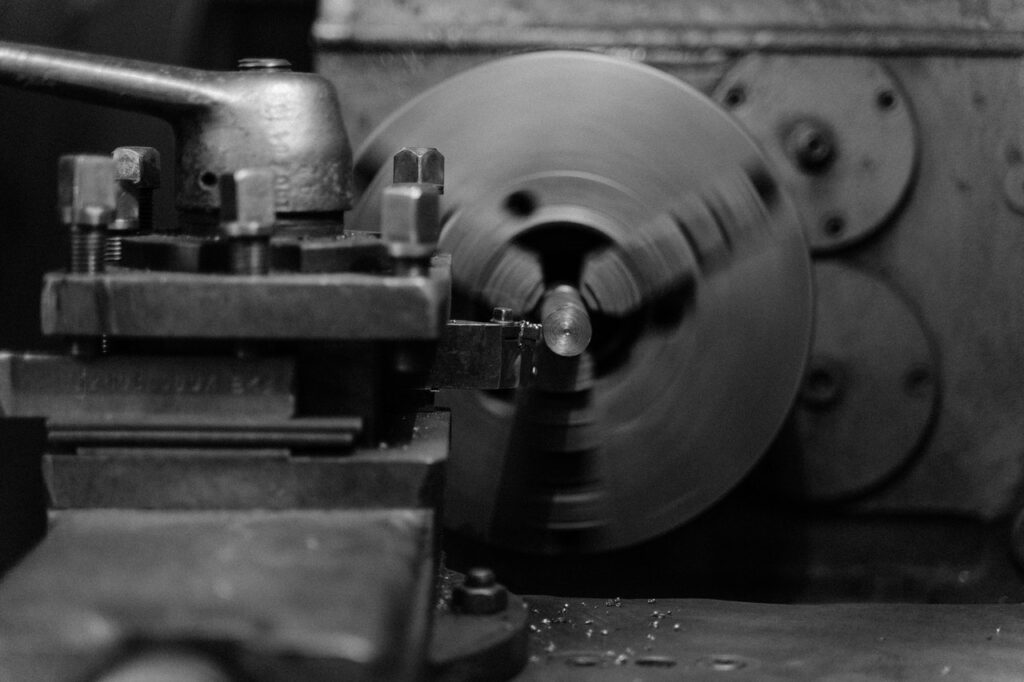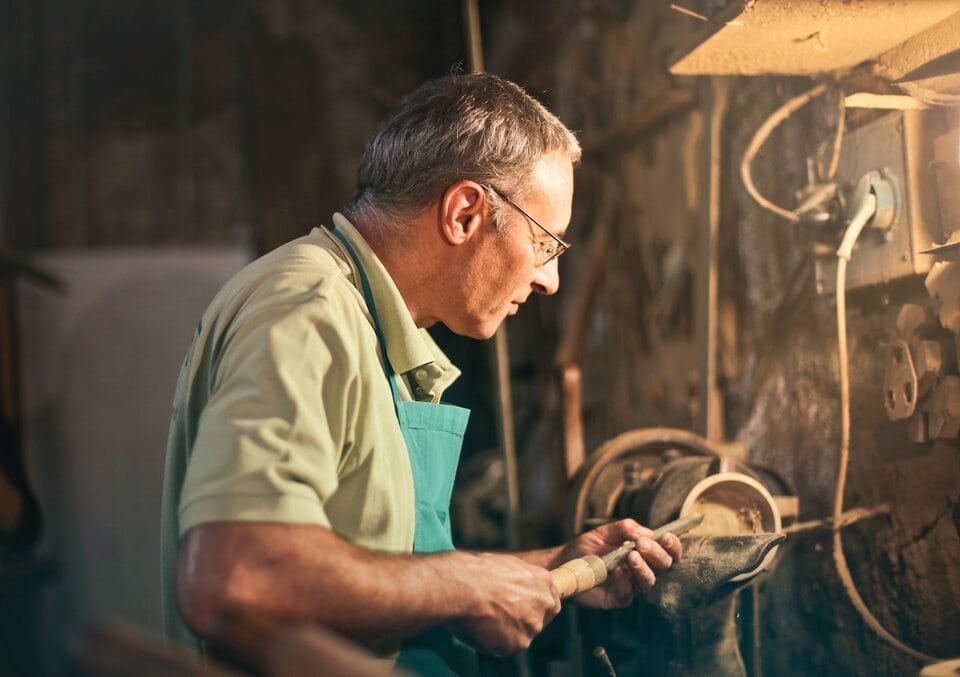When Was the Lathe Invented? History, Facts & FAQ
-

- Last updated:

The first documented modern lathe dates back to 1751 when it was invented by the inventor and artist Jacques de Vaucanson. Although this is the first official lathe, lathe-like rotary tools have long been in use, and the lathe device has undergone many changes since its initial creation.
To learn more about the history of the lathe, keep reading. This device’s long and interesting history goes to show the ingenuity and inventiveness of the human spirit.

When Was the Lathe Invented?
Officially, the first modern lathe was invented around 1751 by the French inventor Jacques de Vaucanson. The device that this inventor made had an all-metal slide and was even described in Encyclopédie, an important encyclopedia in France at the time. This device is the oldest record of the modern lathe.

History of the Lathe
Even though the official date for the lathe’s invention is 1751, there is a long history to be aware of. From ancient times to today, here is a look at the history of the lathe.
Ancient History: Pre-Lathe
The idea behind the lathe is as old as ancient times. There is some evidence that the lathe dates all the way back to ancient Greece in the 13th or 14th century BC. However, the clearest evidence of a lathe dates back to the 6th century BC from tombs found in what would be modern Turkey.
By 400 BC, the lathe was an important rotary tool around the world. In China, the rotary lathe was essential for sharpening weapons and tools on an industrial scale during the Warring States Period. In ancient Egypt, there is even a painting showing an ancient lathe painted in the 3rd century BC.
Dark Ages
Between the 3rd century BC and the 18th century, there was not much development concerning the lathe. The device mainly had the same parts and purposes as the ancient lathe, which means there are no noteworthy uses or changes during this time.

The 18th Century
By the 18th century, a lot of improvements occurred to the lathe. The first official modern lathe documented was created in 1751 by Jacques de Vaucanson. Even though the first modern lathe was not invented until 1751, modernizations of the tool were happening before then.
In 1718, a Russian engineer by the name of Andrey Nartov invented one of the first compound lathes. This lathe included a tool supporting carriage and gears, similar to the lathes we use today. Historians believe that Leonardo DaVinci even invented a lathe of this sort back during the high renaissance.
By 1772, there were major improvements to the lathe. Jan Verbruggen installed a horizontal boring machine in the Royal Arsenal in Woolwich. This product used horsepower so that the product was more efficient and stronger. It even allowed England to produce more efficient weapons during the American Revolution.
Just 11 short years later in 1783, Henry Maudslay added many more developments to the lathe. His lathe machine was very similar to Verbruggen’s, but they were working separately and likely were unaware of each other’s plans.
The 19th Century
The 19th century is known for its industrial improvements. Although the lathe did not have major engineering changes, the use of mechanized power created much more efficient, stronger, and longer-lasting lathes at this time. As a result, the 19th century produced some of the most effective lathes the world had seen.
Although lathes were used for commercial purposes in the 18th century, it was not until the 19th century that these products were used for mass production. In many ways, the industrial revolution shaped the lathe, just as the lathe shaped the industrial revolution.
The 20th Century
By the 20th century, lathes were undergoing even more improvements. Lathes were connected to computers in the 1950s, allowing for lathes to be controlled remotely. Lathes were being used in more scenarios too because they became more accessible.

Today
Today, there are dozens of lathes and lathe machines. There are computerized lathes, as well as manually controlled lathes. There are more accessories than ever, and they are easier to come by. Like most other products in the 21st century, the commercialization of lathes has made it much easier to use, duplicate, and apply lathes to work.
In Conclusion
Although the invention of the modern lathe is officially dated to 1751, older versions of the lathe have been in use since ancient times. From ancient Greece to ancient China, manual lathes have been used as rotary tools.
Since the official invention, lathes have been improved dramatically. Today, you can find lathes with many features, accessories, and benefits. It will be interesting to see if there are any drastic design changes to the lathe anytime in the near future.
See Also:
Featured Image Credit: Ralphs_Fotos, Pixabay
Contents
